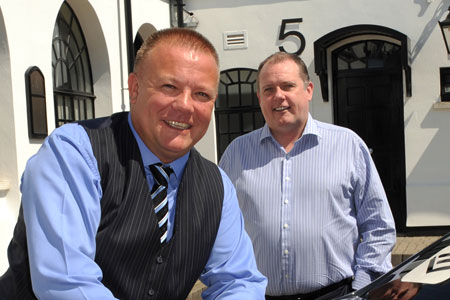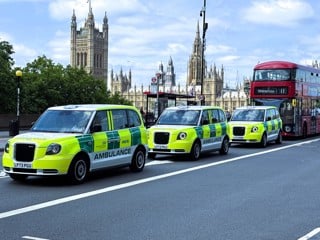Issues around pay, conditions and consistency of work were all resolved while, in return, the company demanded the high standards that were going to help it stand out from the crowd.
“The drivers are our most valuable asset,” says Stuart McColm, commercial director at London Executive. “You need to have an executive driver driving an executive vehicle.”
Before drivers can join London Executive, they must have held a Public Carriage Office licence (PCO) for more than three years and have a good knowledge of central London. “Drivers are given a topographical test at interview stage. If they fail, they’re out the door,” says Harvey.
If they pass, they go through to a second stage which involves classroom-based tests, role-play scenarios and on-the-road assessments that take place over a three-day period.
McColm explains: “During the three-day training period you get the feel whether somebody is the right fit for the business.
“If they’re not we let them go then, not in four weeks’ time when they may have upset one of our biggest clients.
“For example, you can have a driver with a very good ‘knowledge’, but he or she may not have the right aptitude.”
The training leaves no stone unturned as drivers are given photos of pick-up points across the city, with some only accessible at certain times of the day.
Even after they’ve been through the initial training programme, the assessment continues with drivers being targeted by ‘secret shoppers’ and regular inspections. Any shortcomings are immediately addressed and the driver will be retrained if necessary.
McColm says: “Drivers take their cars home with them so it’s important that we have a way of monitoring them as well as their vehicles.”
Technology reaps rewards
Two years ago London Executive invested around £250,000 in the latest tracking system and didn’t have to wait too long to see the benefits.
“In the first month we increased our turnover by 15%,” says McColm.
Drivers are provided with a PDA that not only provides them with jobs, but it is also fitted with a tracker, which is activated once they log on.
The Cordic system is managed from London’s Executive’s offices, but its ability to consider a range of data feeds before allocating a job in a matter of seconds has impressed.
“It’s very clever,” says McColm. Customers are given a rating of one to five, as are its drivers, and the system matches specific customer requirements to driver attributes, which may not mean the nearest driver doing a particular pick-up.
At the same time, however, traffic flows are fed into the system to ensure the driver who is selected carries out the pick-up in a timely fashion.
It’s meant that where the company used to employ seven controllers, the ‘auto dispatch’ function system now requires only two per shift.
“However, they don’t control anymore,” explains McColm. “They are tasked with managing customer expectations and the system.
From a business perspective, previous systems could mean a 10-minute delay between a request and a job being dispatched.
“We don’t have that bottleneck anymore,” says Harvey.
It’s meant that the company was not only doing more jobs, but it was also saving fuel and had cut its staffing costs.
Harvey concludes: “We were looking at thousands of pounds worth of extra revenue every night, just because that bottleneck had gone.”
Factfile
Managing director: Adam Harvey
Commercial director: Stuart McColm
Fleet director: Luc Peeters
Fleet size: 454
Brands on fleet: Mercedes-Benz
Car replacement cycle: 36 months or 100,000 miles





















Login to comment
Comments
No comments have been made yet.